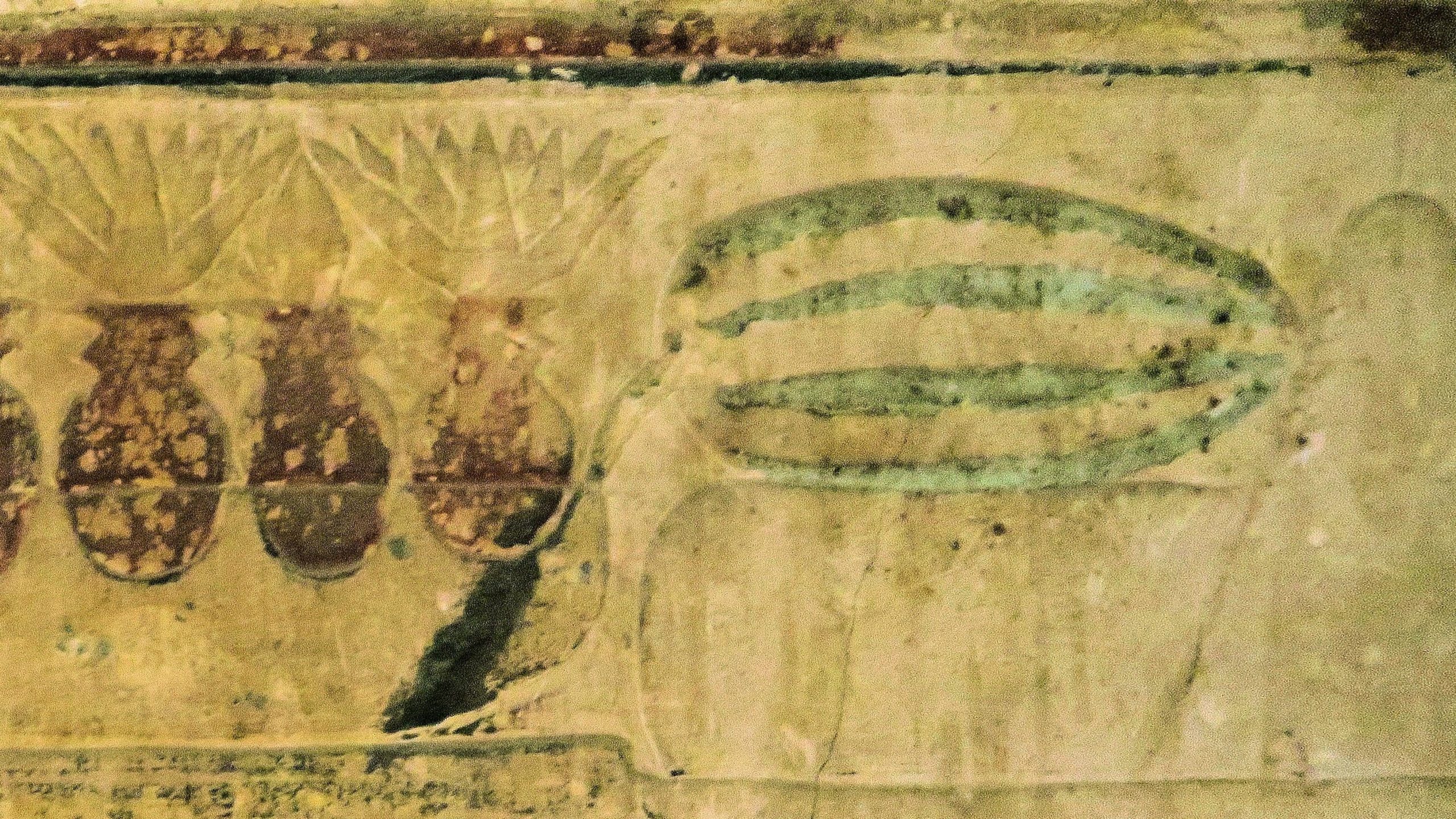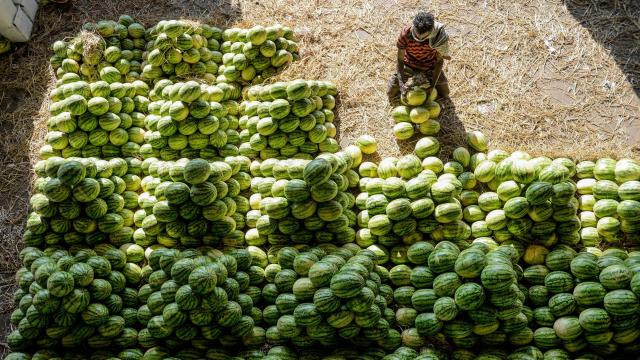Researchers have identified the likely origins of Citrinus lanatus vulgaris, commonly known as the watermelon, according to a new study. Their work pegs a Sudanese melon as the progenitor of the iconic green-striped fruit.
Watermelons are native to Africa, but exactly when, where, and how a watermelon predecessor was domesticated and turned into the fruit we know today has long been a mystery to botanists.
The team’s research, published in the Proceedings of the National Academy of Sciences, follows up on years of work on the biogeography of the melon genus, Citrillus. As lead author Susanne Renner, a botanist at the University of Munich, put it, “everybody thought that there were only four wild species and that the sweet watermelon that we eat today came from South Africa.” But in 2015, one of her then-graduate students, Guillaume Chomicki, found through DNA sequencing of different specimens across Africa that the suspected watermelon ancestor in the south was just a distant relation. “From there, one thing led to another,” Renner said, and the researchers just landed on the Kordofan melon as the most likely genetic origin for the modern watermelon.

Tracing the watermelon’s ancestry to South Africa was the result of a slew of errors, said Chomicki, now a botanist at the University of Sheffield in the United Kingdom. Some 150 years after a disciple of taxonomist Carl Linneaus picked up and named a new variety of watermelon near Cape Town, naming it Citrullus lanatus, an American botanist merged the find with watermelons, which share the same name. “From this moment on, the general idea was that the watermelon came from South Africa,” Chomicki said.
Watermelons and their archaic predecessors aren’t the sorts of things that tend to fossilise, which has further obscured the fruit’s true origins. Seeds sometimes fossilize, which can be useful for probing ancient DNA, but the oldest DNA in this paper comes from 270-year-old watermelon leaves that were preserved in a herbarium. The team reared samples of all watermelon species and grew them to maturity in greenhouses in Munich, Germany and Ithaca, New York.
Then then genetically sequenced those watermelon samples and compared them with DNA extracted from a wild fruit in Sudan, the Kordofan melon. They found about 16,000 genetic structural variants between the two plants and mapped those differences to specific traits of each fruit. They found that the watermelon likely became sweeter as a product of domestication, though it may have lost its bitterness prior to domestication, as the Kordofan fruit isn’t bitter, either.
The team closed in on the Kordofan as a candidate thanks to some Cold War-era plant breeders who noted the possibility that the Kordofan plant was a progenitor of the watermelon, which required some translation of those botanists’ instructions from Russian. The Kordofan melon is smaller than cultivated watermelons and noticeably lacks the striping and bright red interior of its famous cousin. Based on the Kordofan’s range in northeast Africa, it’s plausible the watermelon’s development took place in the same region, but the team also noted the possibility that the watermelon was domesticated in West Africa and then brought east.
“We know that large, long watermelons were eaten raw 4,360 years before present in Egypt, thanks to ancient iconography,” Chomicki said, “but the drawings are of whole fruit, and thus we cannot know if they were already red.” Without material evidence, the researchers relied on a combination of genetic research and historical context. The samples of melon the team used were from Darfur, which was once Nubia. Renner said it’s possible that the crop was domesticated in Nubia and then made its way up the Nile through trade.

But the space between the Kordofan melon and the modern watermelon isn’t a black box, either. Renner said it’s likely that the melons changed independently of human agriculture, based on numerous changes on the genetic level between 4,000 and 6,000 years ago. Even today, there’s evidence for the in-between stages from Kordofan to watermelon. “In the 1800s, it was common to find white-fleshed watermelons in the U.S.,” Renner said, “but due to developments in corporate agriculture and public demand, they have been almost bred out of existence.” Some of those heirloom watermelons are still around, though you won’t find them in the average grocery store.
Once the research team is able to inspect DNA from the seeds of ancient melons they’re currently working with, they may be able to hone in on more steps that occurred as one fruit morphed into another. The researchers also found that the domesticated watermelon has lost several genes associated with disease resistance that the Kordofan melon retains. Perhaps the older fruit still has some tricks up its sleeves.
